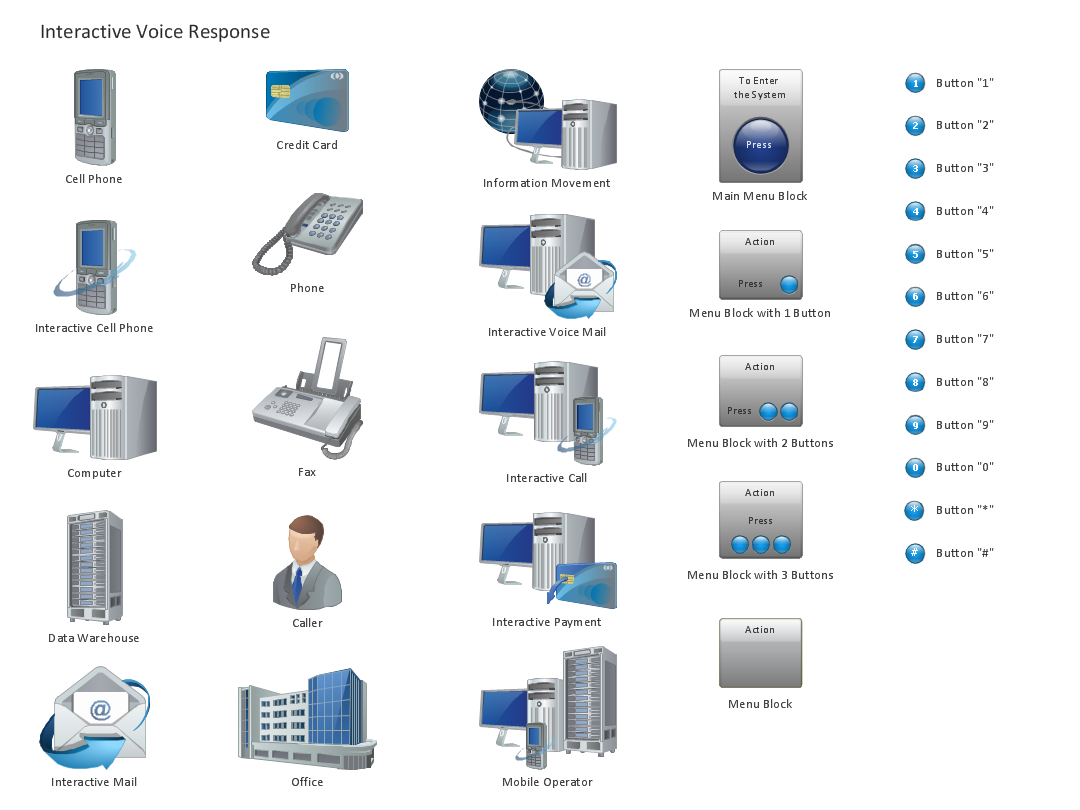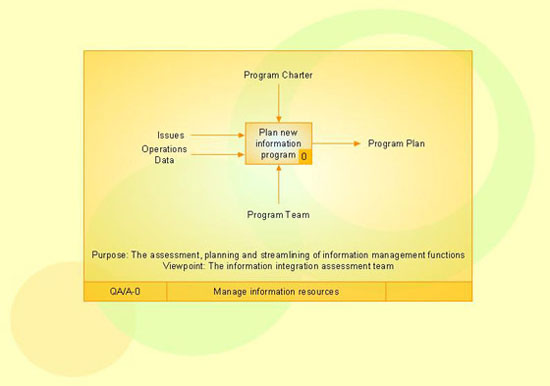The Data flow diagram (DFD) example "Payment for goods using UPS code scanner" shows data flow in process of payment for goods in the shop using the MaxiCode scanner.
"MaxiCode is a public domain, machine-readable symbol system originally created and used by United Parcel Service. Suitable for tracking and managing the shipment of packages, it resembles a barcode, but uses dots arranged in a hexagonal grid instead of bars. MaxiCode has been standardised under ISO/ IEC 16023.
A MaxiCode symbol (internally called "Bird's Eye", "Target", "dense code", or "UPS code") appears as a 1 inch square, with a bullseye in the middle, surrounded by a pattern of hexagonal dots. It can store about 93 characters of information, and up to 8 MaxiCode symbols can be chained together to convey more data. The centered symmetrical bullseye is useful in automatic symbol location regardless of orientation, and it allows MaxiCode symbols to be scanned even on a package traveling rapidly." [MaxiCode. Wikipedia]
This example of data flow diagram (Gane & Sarson notation) was created using the ConceptDraw PRO diagramming and vector drawing software extended with the Data Flow Diagrams solution from the Software Development area of ConceptDraw Solution Park.
"MaxiCode is a public domain, machine-readable symbol system originally created and used by United Parcel Service. Suitable for tracking and managing the shipment of packages, it resembles a barcode, but uses dots arranged in a hexagonal grid instead of bars. MaxiCode has been standardised under ISO/ IEC 16023.
A MaxiCode symbol (internally called "Bird's Eye", "Target", "dense code", or "UPS code") appears as a 1 inch square, with a bullseye in the middle, surrounded by a pattern of hexagonal dots. It can store about 93 characters of information, and up to 8 MaxiCode symbols can be chained together to convey more data. The centered symmetrical bullseye is useful in automatic symbol location regardless of orientation, and it allows MaxiCode symbols to be scanned even on a package traveling rapidly." [MaxiCode. Wikipedia]
This example of data flow diagram (Gane & Sarson notation) was created using the ConceptDraw PRO diagramming and vector drawing software extended with the Data Flow Diagrams solution from the Software Development area of ConceptDraw Solution Park.
 Data Flow Diagrams (DFD)
Data Flow Diagrams (DFD)
Data Flow Diagrams solution extends ConceptDraw PRO software with templates, samples and libraries of vector stencils for drawing the data flow diagrams (DFD).
Design Element: IVR for Network Diagrams
ConceptDraw PRO is perfect for software designers and software developers who need to draw IVR Network Diagrams.
IDEF3 Standard
Use Case Diagrams technology. IDEF3 Standard is intended for description and further analysis of technological processes of an enterprise. Using IDEF3 standard it is possible to examine and model scenarios of technological processes.- Data Flow Diagram
- Example of DFD for Online Store ( Data Flow Diagram ) DFD ...
- Example of DFD for Online Store ( Data Flow Diagram ) DFD ...
- Data Flow Diagram (DFD)
- Data Flow Diagram With Easy Business Example
- UML Component Diagram Example - Online Shopping | Example of ...
- Store Layout Software | Example of DFD for Online Store (Data Flow ...
- Data Flow Diagrams (DFD) | Example of DFD for Online Store (Data ...
- Engineering | Electrical Engineering | Data Flow Diagrams (DFD ...
- 1st Level Dfd For Shop Management System
- Example of DFD for Online Store ( Data Flow Diagram ) DFD ...
- UML Class Diagram Example - Medical Shop | Example of DFD for ...
- Flow chart Example. Warehouse Flowchart | Process Flowchart ...
- Online store social media response flowchart | Example of DFD for ...
- Process Flowchart | Engineering | Data Flow Diagrams (DFD) | Flow ...
- Engineering | Example of DFD for Online Store ( Data Flow Diagram ...
- DFD Library System | Example of DFD for Online Store (Data Flow ...
- Flow Chart Online | State Diagram Example - Online Store | Example ...
- Data Flow Diagram Software | Example of DFD for Online Store ...
- Data Flow Diagrams | UML Component Diagram Example - Online ...
---payment-for-goods-using-ups-code-scanner.png--diagram-flowchart-example.png)

